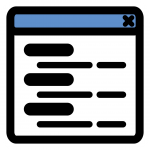What Happened When I Gave Up Multitasking For A Week
The problem with multitasking is that it just doesn’t work as well as we think it does.
The efficiency myth has been debunked by numerous experts and studies. For example, research from Stanford revealed that the more people multitask, the more they are training their brain to be scattered, and the less they are able to be creative or develop emotional intelligence. Another study from the suggested that your IQ can drop as much as if you’d missed a night of sleep. And the American Psychological Association revealed that a group of studies proved that workers performing juggling acts were actually costing a lot more time and increasing the chance of errors. Overall, this degrades your brain’s executive function as well as damaging your productivity.
Even though I’m more aware than most of the marauding toll multitasking can take, for most of my working life, I’ve been hardcore multitasker. Like the subjects of a study from the University of Utah, I had an inflated sense of my ability to accomplish more than one thing at once. You could often find me on the phone while looking up something unrelated up on the computer, tuning in to the conversations in the room, and nibbling away at my mid-morning (or afternoon) snack.
A former boss reinforced my overestimation when she presented me with a framed drawing of the Cat in the Hat. You know the one. He’s balancing on a beach ball while juggling an umbrella, rake, and fish bowl in one hand and a stack of books in the other. One foot props up a tray that holds a bottle of milk and a glass. He’s got a birthday cake perched on his hat and his tail curled around a fan.
As a full-time working mother of two, I became that cat. I eyeballed work email while making dinner. I took client calls in the carpool line. When the beachball of doom spun on my overworked computer, I used that time to check social feeds on my phone. Waiting for an editor to respond to a chat? Taken up by texting, tweeting, or reading a paragraph of a long-form article in another open tab. Even a simple trip to the restroom is an exercise in multitasking. Yes, I’ve answered emails and texts in the bathroom. (I do draw the line at answering the phone there.)
A couple of years ago, I made a major concerted effort to stop answering the siren song of pings and whistles after hours. I then chipped away at my chronic email habit and dealt with it in batches during designated times of the day. So when I read Laura Vanderkam’s piece on the true time cost of multitasking a couple of weeks ago, I thought I was ready to monotask.
I was wrong.
Managing Misconceptions
I realized that I was working by managing distractions. Even my most “focused” time—on deadline—was somewhat scattered by switching off-task.
Last Monday, I decided to combat this with complete and total time management makeover to monotasking. I began with morning coffee. I usually make myself a pour over which requires me to boil water and then methodically pour a stream of it over the grounds in an open filter. That task was usually accompanied by a reading of the morning’s headlines, checking on Slack and Twitter, and feeding my cat.
Although I never clocked it, I used to think the whole process took around twenty or so minutes. That was a misconception. Waiting 30 seconds for the grounds to bloom is just that, half a minute. Counting to keep focus instead of guesstimating while I snapped up my phone and scrolled, made the time fly. Ditto for the pour. My previous 20 distracted minutes making coffee turned into just a few minutes.
Chatting was another matter. When you work remotely, as I do, platforms such as Slack recreate the immediacy of conversation that occurs in a traditional workspace. However, because it is not a face-to-face communication, responses can be asynchronous. Instead of just sitting there waiting to hear back, I’ve made it a practice to switch to another task in between replies. Monotasking doesn’t make room for that. I had to alert the people I speak to most regularly throughout the day that I was conducting an experiment in focus. What I discovered was that small talk was nearly eliminated from the work day. Since I am an extrovert, I missed the camaraderie of chitchat. But it did prevent them from reaching out to me when I was on deadline. Even if I don’t respond, the flash of the notification stresses me out. So I had to close the tab and turn the phone on silent to make it work.
A Different Kind Of FOMO
To make monotasking work, I set aside times of the day as assiduously as I would set a deadline or an appointment.
Since I’d already committed to answering emails at specific times of the day, I thought (erroneously) that I was on task while crafting my replies. It pained me to realize that longer correspondence (several paragraphs) didn’t hold my attention for very long. If something I read triggered another thought, I’d abandon the missive in the middle and flip to another tab. Down the rabbit hole I went. On the plus side, realizing this has made me write and respond in an even more succinct way.
Ditto for reading time, which is a necessary part of my day, both to catch up on the news and for writing inspiration. However, what I didn’t realize was how much I drifted even during a brief item. The problem was that reading sparked a different kind of FOMO (fear of missing out). Fear of Forgetting Something (FOFS?) made me switch off the piece and attempt to tackle something else. A think piece could remind me that I needed to book an appointment with someone. Rather than scrawl a reminder on a sticky, I’d stop the flow of the story I was reading and set up the time. Then I’d have to find my way back to the original piece and scan a few paragraphs to remind myself of where I left off.
Focused On Pulling Focus
Even the sacred deadline time was sufficiently riddled with side glances to the phone, or a quick sweep of email—ostensibly to check and see if something related to the story in progress would surface. This happened with distressing frequency at the beginning of the week.
I’m not alone, apparently. UC Irvine professor Gloria Mark discovered that workers she and her colleagues observed in 2004 switched off writing an average of every three minutes. In 2012, the screen flip happened in just one minute and 15 seconds. Two years later, workers’ focus on one item dwindled further to 59.5 seconds. I still made my deadlines, but according to Marks:
“Working faster with interruptions has its cost: People in the interrupted conditions experienced a higher workload, more stress, higher frustration, more time pressure, and effort. So interrupted work may be done faster, but at a price.”
No wonder I often felt depleted after pressing “send.”
Retraining The Brain
Needless to say, once I became aware of all these habits, I could make more of a pointed effort to be more disciplined and stick to one thing at a time. That necessitated several things. One was to understand just how long I could stay on track. I used a clock to track myself and by the middle of the week I was ranging from 15 minutes for email to an hour for writing an article without getting distracted.
To further boost my focusing powers, I removed my phone from where I could immediately see or hear it and I didn’t take it with me when I left my desk. I closed all but the most relevant tabs while I was writing. I read longer articles on my phone where it was more difficult to switch functions.
Productivity Bump
By the end of the week I’d achieved maximum monotasking in that I wasn’t sweating about what I might be missing, or itching to switch off-task. I ended the week on a positive note, too. Not only was I more deliberate about each item I checked off my to-do list, but the focus tapped a deeper vein of contentment in the accomplishment.
I must have finally achieved the “flow” state. “Flow” is described as “a state of concentration or complete absorption with the activity at hand and the situation” by its creator, Hungarian psychologist Mihaly Csikszentmihalyi. His TED talk extolled flow’s happiness-inducing properties as well as its ability to make time fly—along with your work.
The tough part is going to be sticking with it over time. The temptation of technology is often too great.
Related Video: Who Is More Productive: Multitaskers Or Monotaskers?
Fast Company , Read Full Story
(9)













